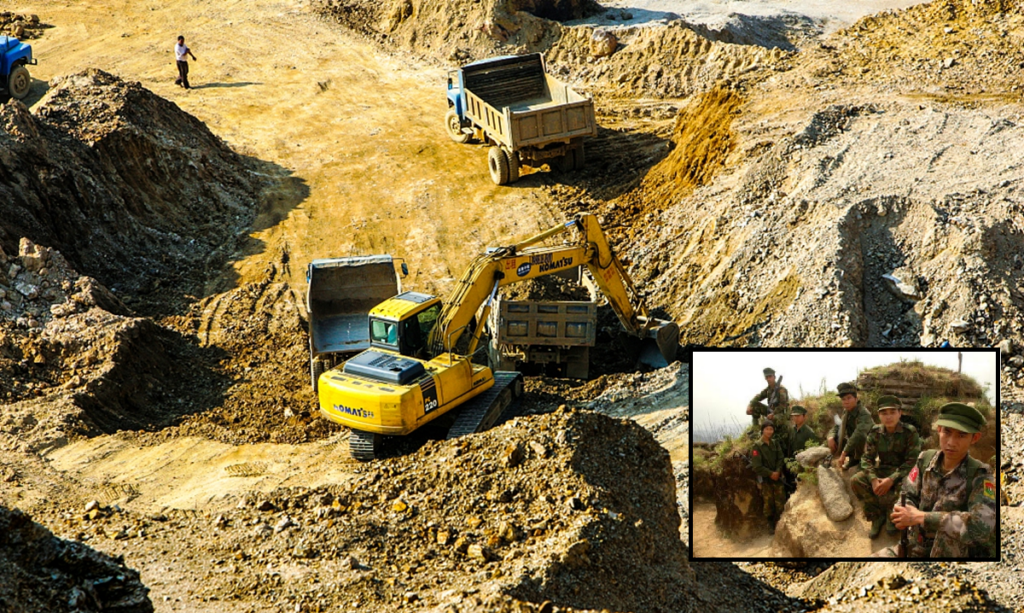
- Estimates suggest that almost 50% of the global heavy rare earth supply currently comes from northern Myanmar, but China processes most of it.
- The KIA has reportedly taken over several rare earth mining areas in Kachin State, disrupting the flow of minerals into China.
- Countries like the U.S., Japan, and members of the EU, already concerned about over-reliance on China, may face higher prices or supply shortages.
In a recent and rather worrying turn of events, China has warned that it may stop importing rare earth minerals from Myanmar’s rebel-held areas, especially those controlled by the Kachin Independence Army (KIA). This occurs when global demand for rare earth elements, especially heavy rare earths such as dysprosium and terbium, sharply rises due to the booming electric vehicle (EV) and renewable energy sectors.
The implications extend far beyond China-Myanmar relations. These minerals are vital for making permanent magnets used in EVs, wind turbines, and military equipment. Estimates suggest that almost 50% of the global heavy rare earth supply currently comes from northern Myanmar, but China processes most of it. This creates a fragile and highly centralised supply chain.
From October 2024 onwards, the KIA has reportedly taken over several rare earth mining areas in Kachin State, disrupting the flow of minerals into China. According to Reuters (2025), Chinese imports of these minerals dropped by nearly 50% in the first five months of 2025. In response, Beijing is said to have directly warned the KIA: halt your military advance or lose your access to Chinese buyers.
This situation is complex. On the one hand, China wants to support the Myanmar junta, its strategic partner. Conversely, China depends heavily on the minerals sourced from rebel-controlled areas to keep its industries running. This is a clear example of how economic interests and political loyalties collide, mainly when the supply chain depends on conflict-affected regions.
More importantly, this conflict is centred around Bhamo, a key city for mineral trade. The KIA has been advancing in this area, while China has also hinted at rewarding the rebels if they stop their offensive. This includes offering trade incentives in exchange for political calm. Such negotiations show that rare earths are not just resources but bargaining chips in geopolitical games.
If China halts imports, it could trigger a global shock. Countries like the U.S., Japan, and members of the EU, already concerned about over-reliance on China, may face higher prices or supply shortages. This would affect the cost of green technologies, especially electric vehicles. Even companies trying to diversify their rare earth sources may not be able to do so quickly enough.
Another dimension is the environmental damage and human rights issues linked with rare earth mining in Kachin. Local communities face displacement, toxic waste, and ecosystem destruction. The situation raises ethical questions: Should the world buy rare earths from conflict zones to meet EV goals?
In conclusion, this issue deserves more attention, not just from policymakers but also from environmentalists, economists, and the public. If Myanmar’s conflict worsens and China follows through on its warning, the global clean energy transition could be directly affected. A solution must involve diversifying supply chains, investing in recycling technologies, and supporting peace in resource-rich regions.
References:
- Reuters (2025). China risks global heavy rare-earth supply to stop the Myanmar rebel victory.
- Le Monde (2024). Rare Earth Mining in Myanmar: Environmental Disaster in the Making.
- StratNews Global (2025). Myanmar Conflict Threatens Global Rare Earth Supplies.
- Business & Human Rights Resource Centre (2024). Boom in Illegal Rare Earth Mining Linked to Global Supply Chains.
Sakshi Yadav is pursuing a Master’s Degree in International Studies from Christ University, Bangalore. Her research areas include International Political Economy, South Asia, South Pacific and U.S. Foreign Policy. Views expressed are the author’s own.
